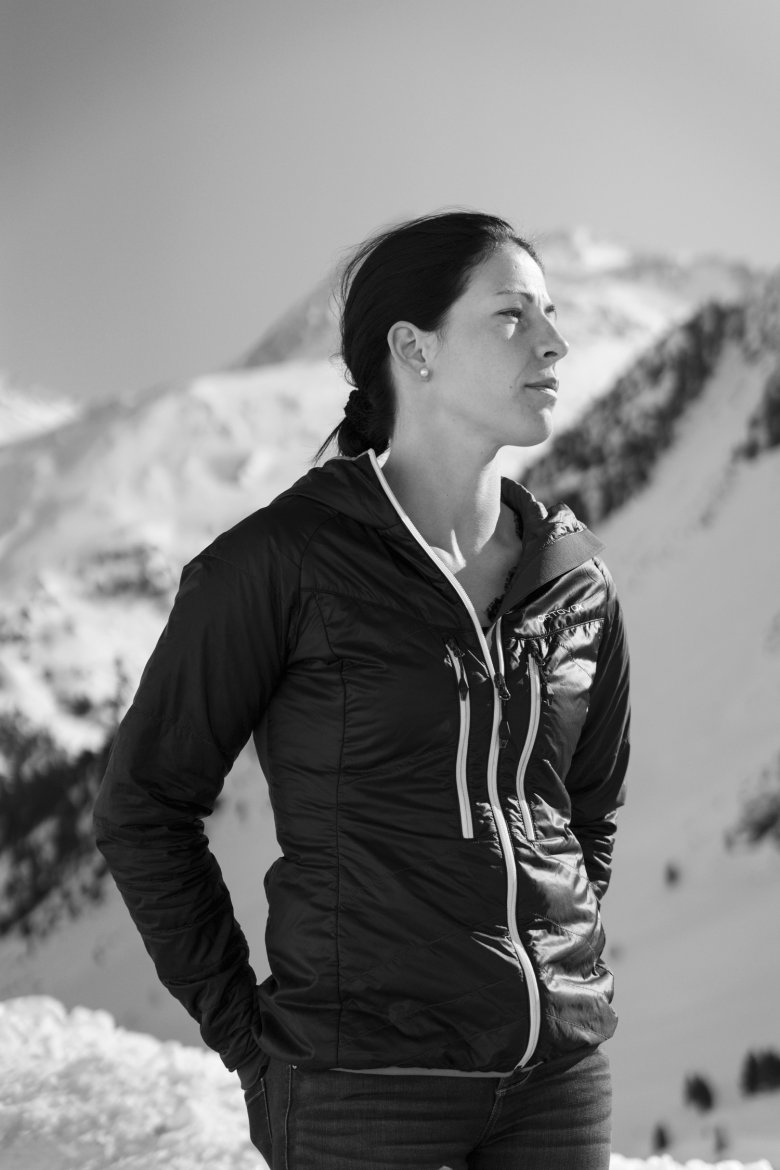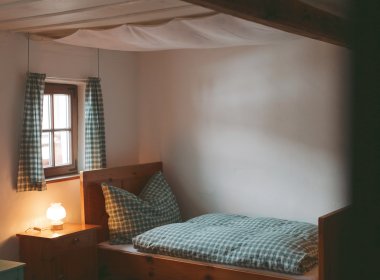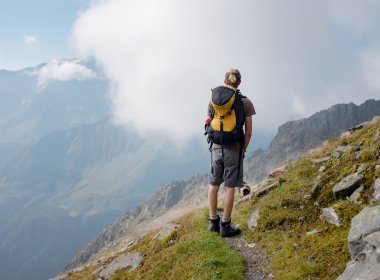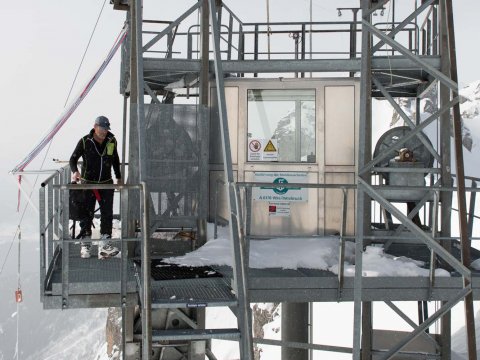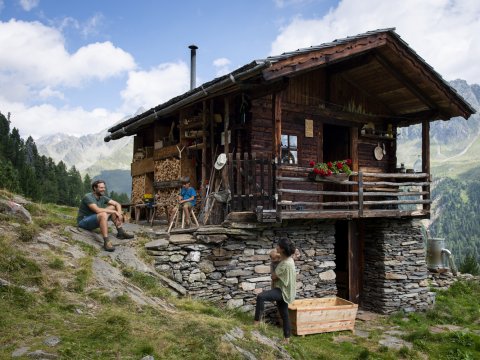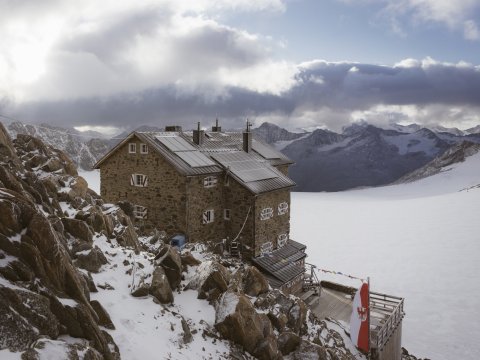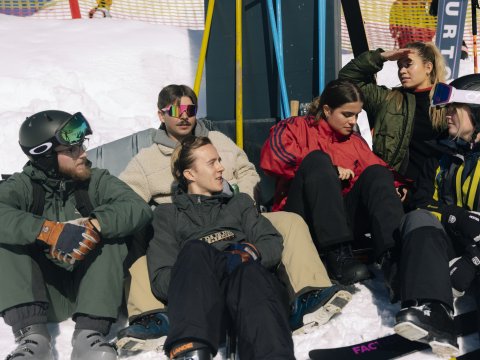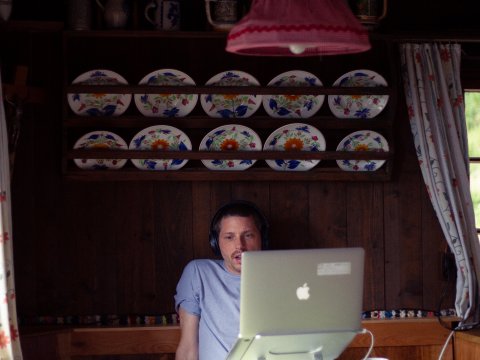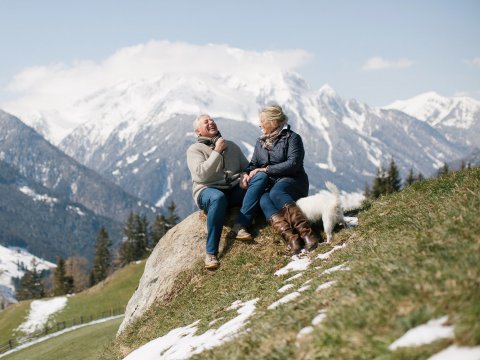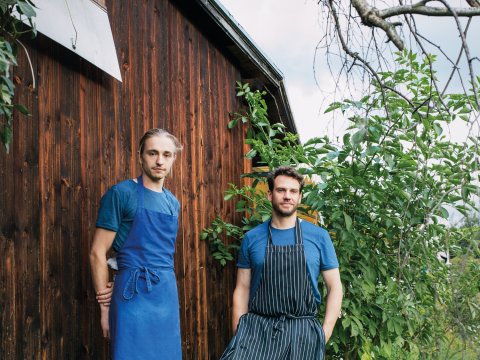Life at the end of the valley
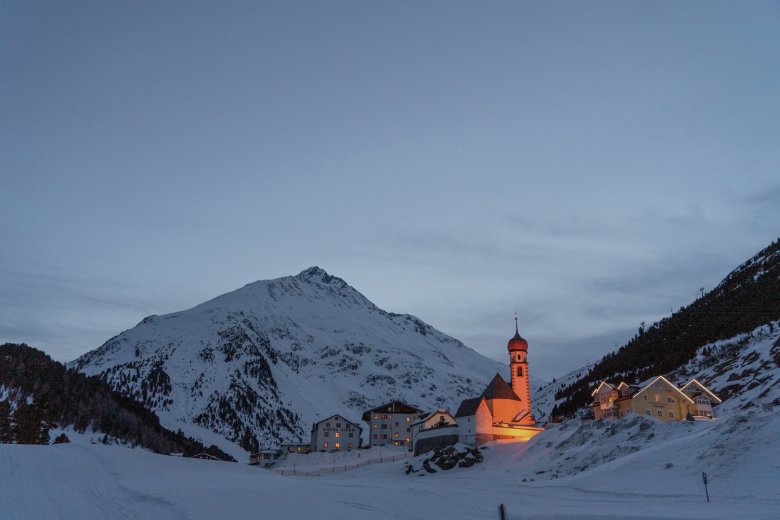
PHOTOS: BERT HEINZLMEIER
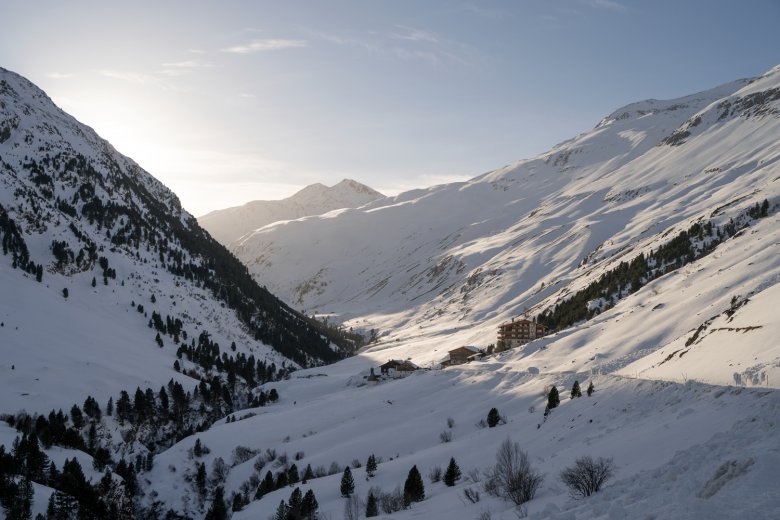
Vent | 1,895 Metres | 138 Inhabitants
Sophie Scheiber, 27, runs two mountain huts
“In winter we have more tourists than inhabitants. It’s good for our valley, but of course I’m happy when I see a local woman with a baby on the way – then you know that the village will continue. Our school is closed at the moment. I like living in Vent. Not much happens here, but everyone knows everyone. Yesterday I was up on the Wildes Mannle mountain again, at 3,020 metres. I sit on the summit in peace and quiet and just appreciate the landscape for an hour or so. In summer I run two mountain huts: the Hochjochhospiz at 2,413 metres and the Brandenburger Haus at 3,277 metres. I also go up to the huts every two or three weeks in winter to check everything is okay.”
Vent
Located at 1,900 metres above sea level, it is easy to see why the small village of Vent in the Ötztal Nature Park is very popular with hikers and mountaineers.
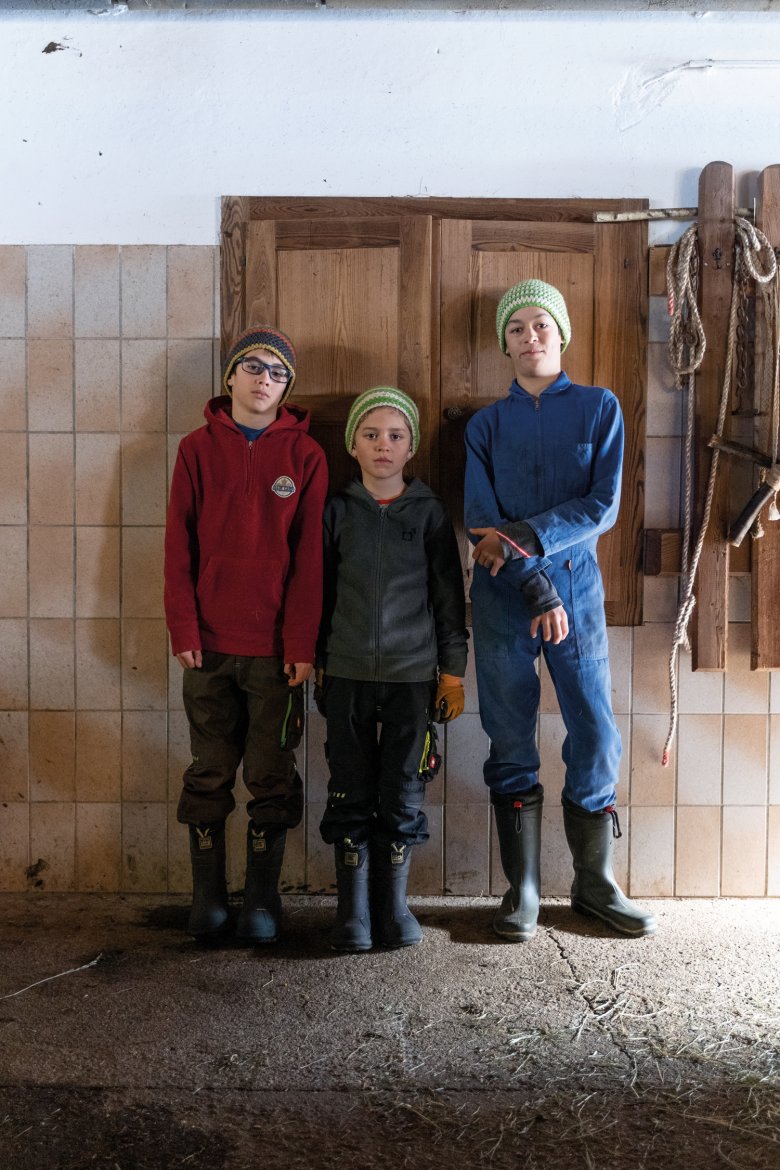
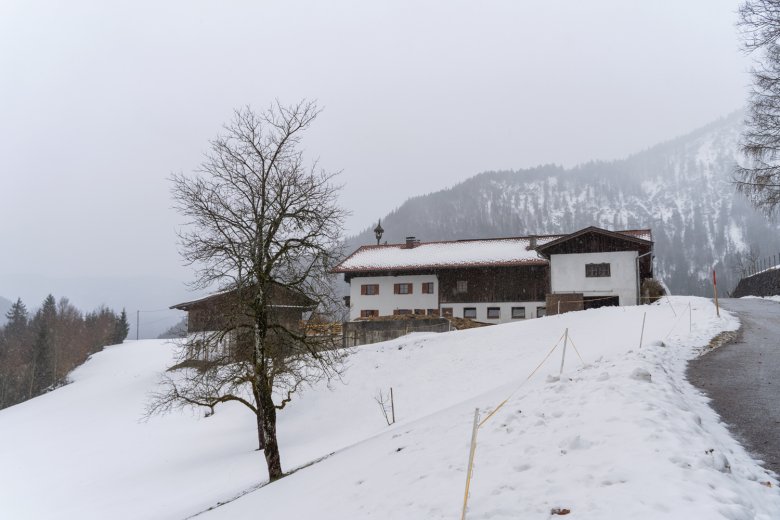
Aschau bei Brandenberg | 850 Metres | 365 Inhabitants
Dominik Burgstaller, 14, with his brothers Manuel, 11, and Jakob, 9, all school pupils
“I’ll probably take over my dad’s farm one day. Of us three boys, I’m the one who wants it the most. I would like to train as an agricultural machinery mechanic. I already like working in the stables, especially during the holidays. We have 10 dairy cows and 15 young cattle. I also like to look after the calves. My favourite cow is called the Countess. She has such a beautiful colour. The farm here has belonged to our family since the 16th century. I go to school in Brandenberg, 10 kilometres away – from my window I can see the village. Our mum takes us to the bus stop, and then it takes half an hour by bus. We have to get up at 6 o’clock. The children who live in Brandenberg can, of course, sleep a little longer. It doesn’t bother me that we don’t have any direct neighbours. That means we can be as loud as we want sometimes. We certainly never get bored here.”
Brandenberg
The village of Brandenberg is perched on a sunny plateau overlooking the eastern section of the Lower Inntal Valley. It is home to around 1,500 inhabitants and surrounded by an unspoilt landscape well worth exploring.
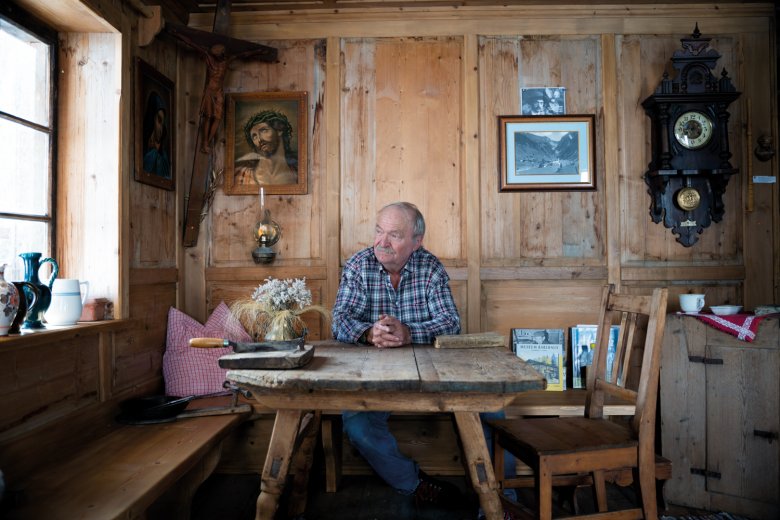
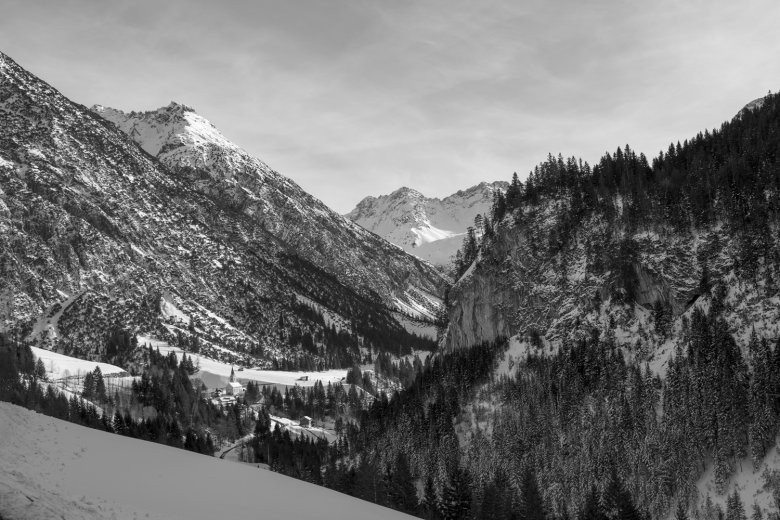
Gramais | 1,328 Metres | 40 Inhabitants
Gerd Kipping, 75, pensioner
“I was a guest in this house with my family for the first time in 1955. As members of the Hamburg Alpine Club we would spend many summer weeks in Gramais climbing mountains. Back then the journey took three days on a sleeper train. Later I married a woman from Gramais and lived with her in Bregenz for 38 years. Our son now runs the orthopaedic shoemaker’s shop I set up there, and I am a pensioner here in the smallest community in Austria. Despite the remote location, there is always something to do. We have organic sheep, forests and the holiday flats in Irmi’s parents‘ house, which dates from 1740. There are only 40 people living in our community at the moment. Of course that is a challenge – it means everyone in the village has to take on several tasks. For example, I am the head of the mountain rescue service and look after the local museum. I still don’t speak the local dialect, but I am fully integrated.”
Gramais
Gramais is officially the smallest municipality in Austria. Its inhabitants lovingly refer to the village they call home as the ‚Pearl of the Lechtal Valley‘.
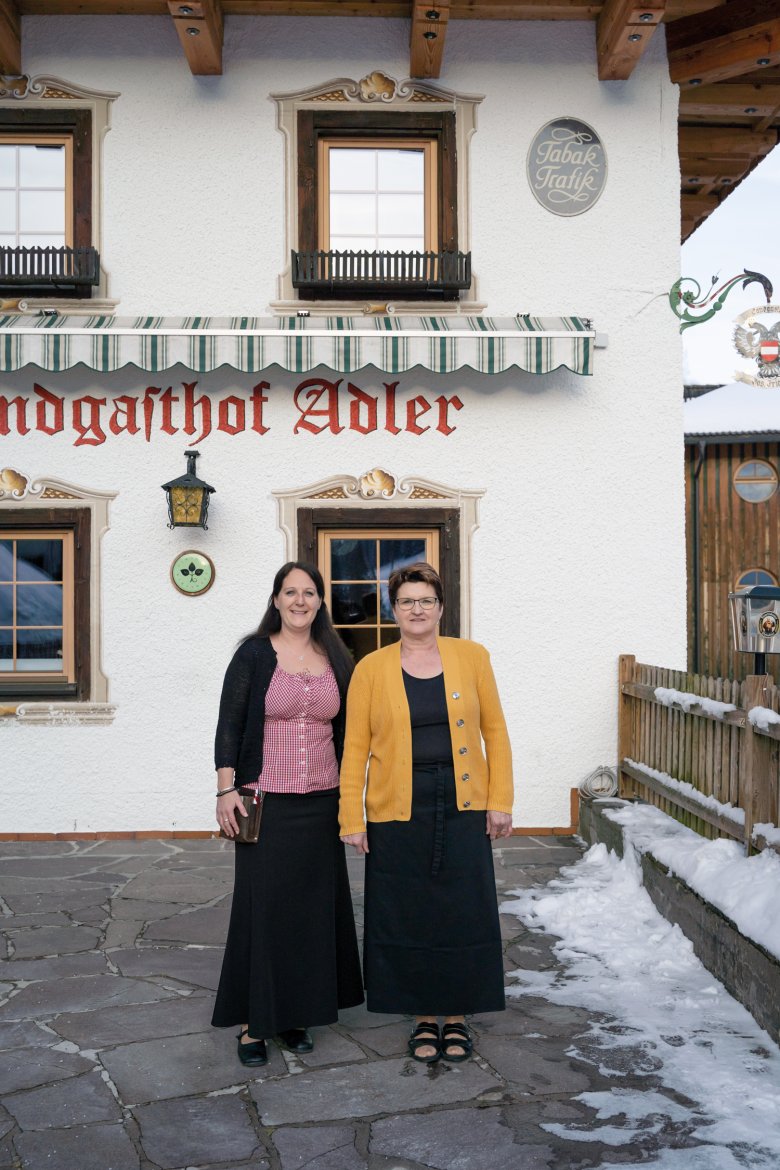
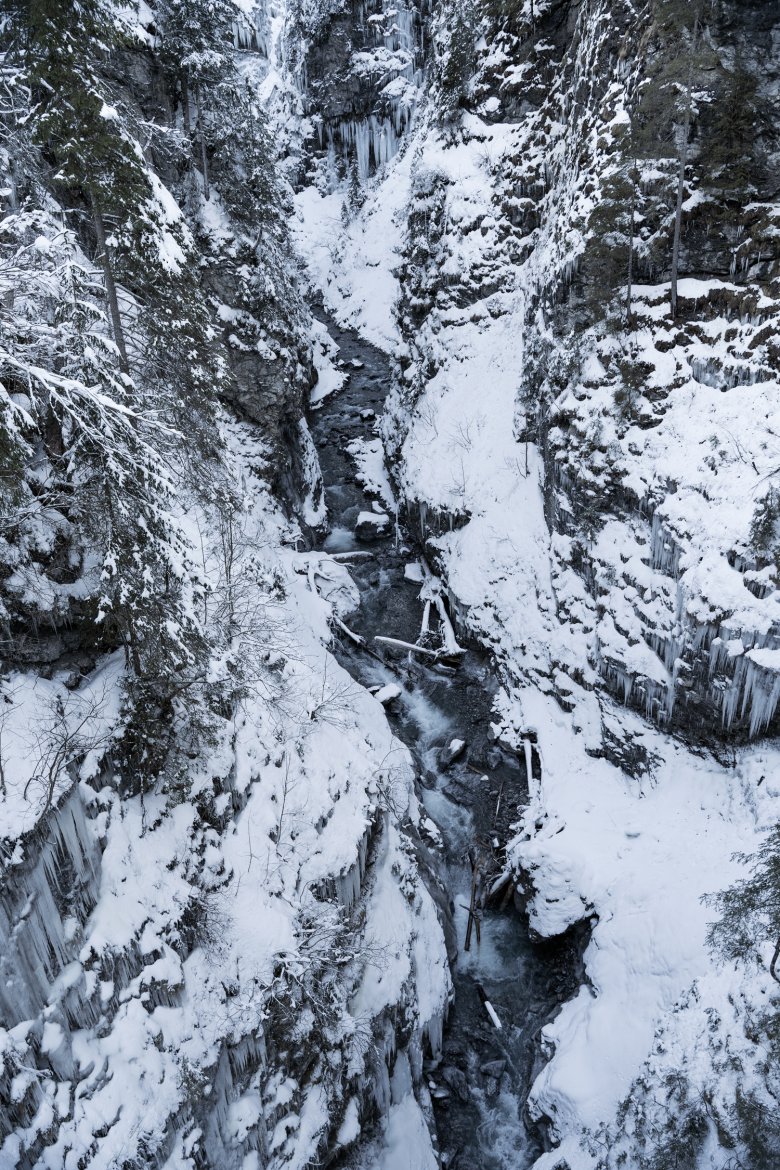
Hinterhornbach | 1,101 Metres | 95 Inhabitants
Monika, 34 years old, waitress, and Nicole Eisnecker, 59, cook and landlady
„We currently have 14 children in the village – and that is including the baby that will be born in a fortnight! The population here is quite stable. This is perhaps also due to the fact that the road to us is well developed and life here is somewhat easier than in many other communities at the end of a valley. Here you can have the best of both worlds: peace and quiet plus good connections. There is a new municipal depot, good street lighting and a new sewage treatment plant. We wouldn’t want to swap places with anyone. For shopping we like to go to Reutte, but once we are done we quickly come back up here. It’s so hectic down there. In the past there were some plans to build a road connecting our village to Oberstdorf, but thankfully it never happened.”
Hinterhornbach
Hinterhornbach lies in the Hornbachtal Valley, a side valley of the Lechtal Valley. It is surrounded by an unspoilt landscape and majestic mountains, making this small village in the west of Tirol well worth a visit.
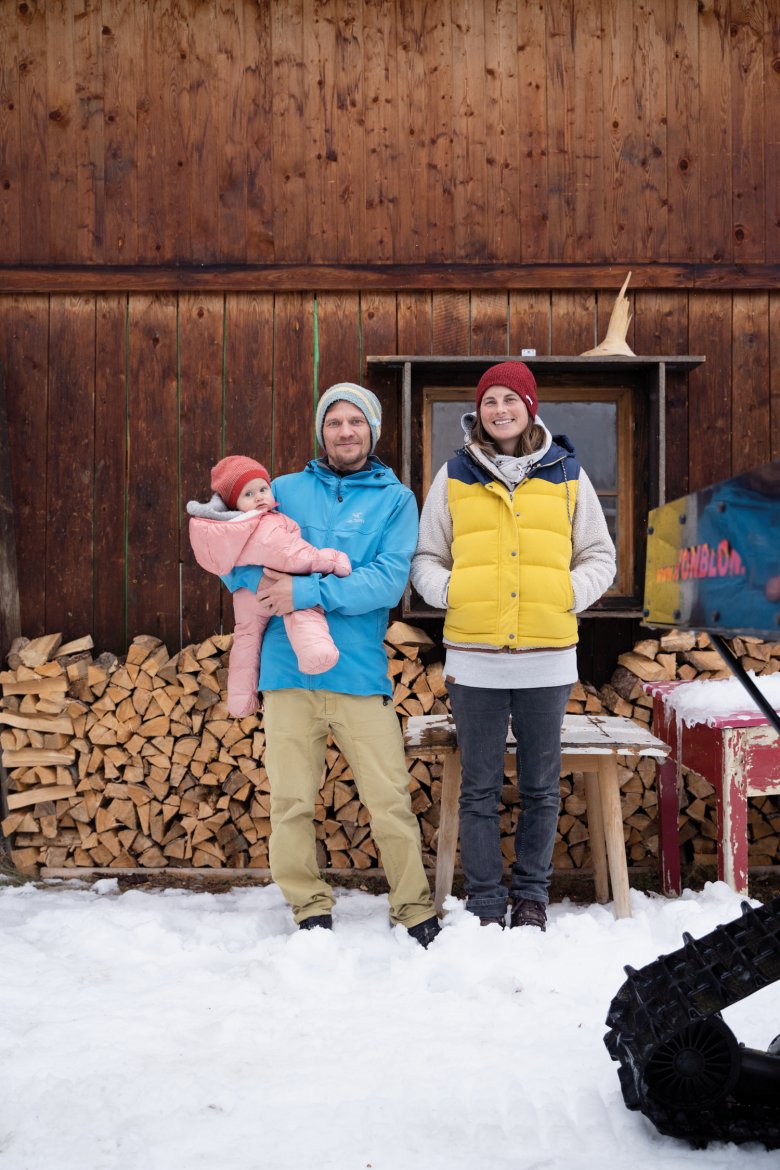

Navis | 1,485 Metres | 1978 Inhabitants
Chrissi Engels, 37, and Waldemar Chmelewskij, 39, with Rosalie, who run the Hubird Lodge
„We originally come from Cologne. We ended up in Tirol because of our passion for snowboarding. For years we ran a pension in the Zillertal Valley, but at some point it became too hectic for us. Then we discovered the run-down inn up here – and totally renovated the building. Today we are able to welcome up to 21 guests – yoga groups, birthday parties, artists and companies come here. Life is a little slower here in Navis. It is relaxed. At the same time the people up here are very agile and lively. One quickly finds support, for example when we initially needed help with luggage transport. Chrissie teaches yoga twice a week for the farmers‘ wives, and the locals are happy that something is going on. The remote farms here at the end of the valley are a community in their own right. Every year in the run-up to Christmas, a different farm organises an Advent festival with mulled wine and punch for the kids. We don’t feel isolated. Sometimes we leave the valley to get new ideas and stay creative.”
Navis
The municipality of Navis covers the entire Navistal Valley, a remote side valley branching off east from the Wipptal Valley.
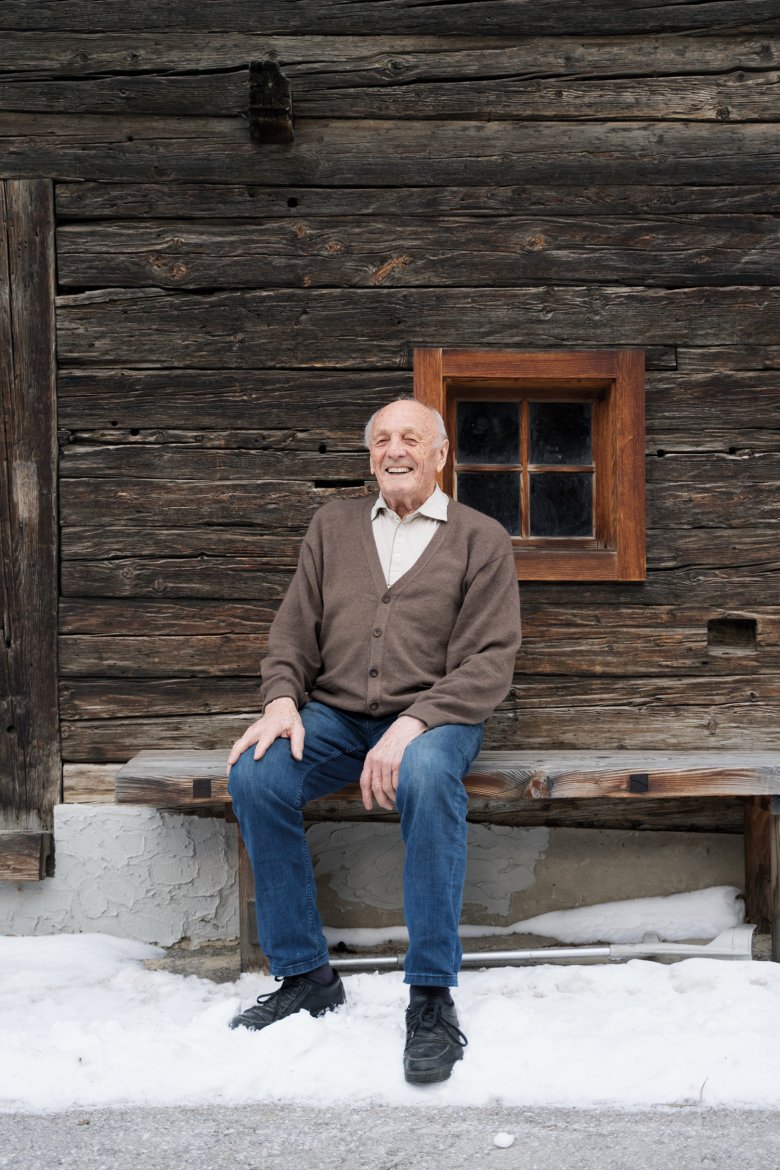
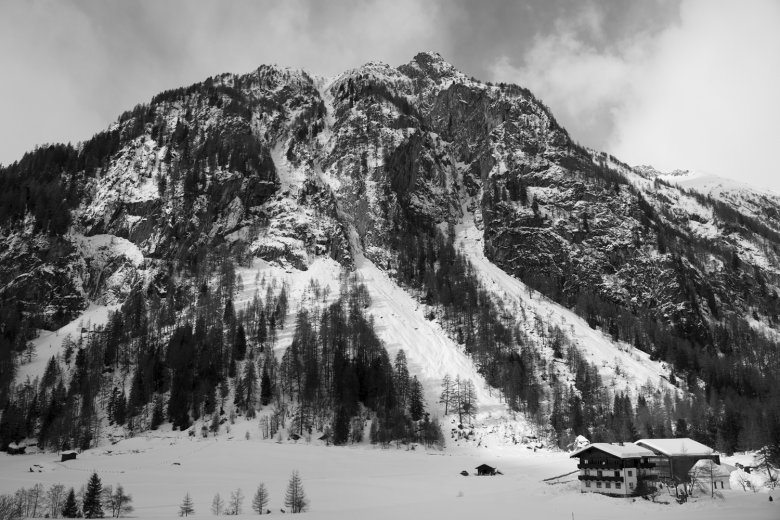
Hinterbichl | 1,329 Metres | 124 Inhabitants
Ludwig Berger, 89, pensioner
„Once, during the war, I went with my uncle to Lienz to auction off a bull. We walked 45 kilometres on foot. Twelve hours. Then, when we finally got here, there was an air-raid alarm in the town – the cattle dealers fled, and we had to sell the bull at a cheap price to a butcher. Those were different times. At lunch everyone sat around the big soup bowl: twelve children, the parents and grandparents, a maid and the farmhand. We worked hard. It was four kilometres to school, and every morning at 6 o’clock we had to go to church for mass beforehand. My father later divided the property: my older brother got the farm, I got the inn. Even as a child I worked with my mother in the kitchen. There were large field masses here, at which the Vienna Boys‘ Choir sang. We cooked the food for them: 300 portions of goulash, roast pork and schnitzel. Later I worked as a waiter and behind the bar. I still get up at 4.30 a.m. every day and set up the breakfast buffet. I was a volunteer member of the mountain rescue service for 50 years. We searched the crevasses using torches. Today I have four artificial joints, but they have taken me all over the world. It wasn’t until later in life that I left the valley and discovered the pleasure of travelling.”
Hinterbichl (Prägraten)
Prägraten is a small village in the Virgental Valley surrounded by the majestic peaks and glaciers of the Großvenediger to the north and the Lasörling Mountains to the south.
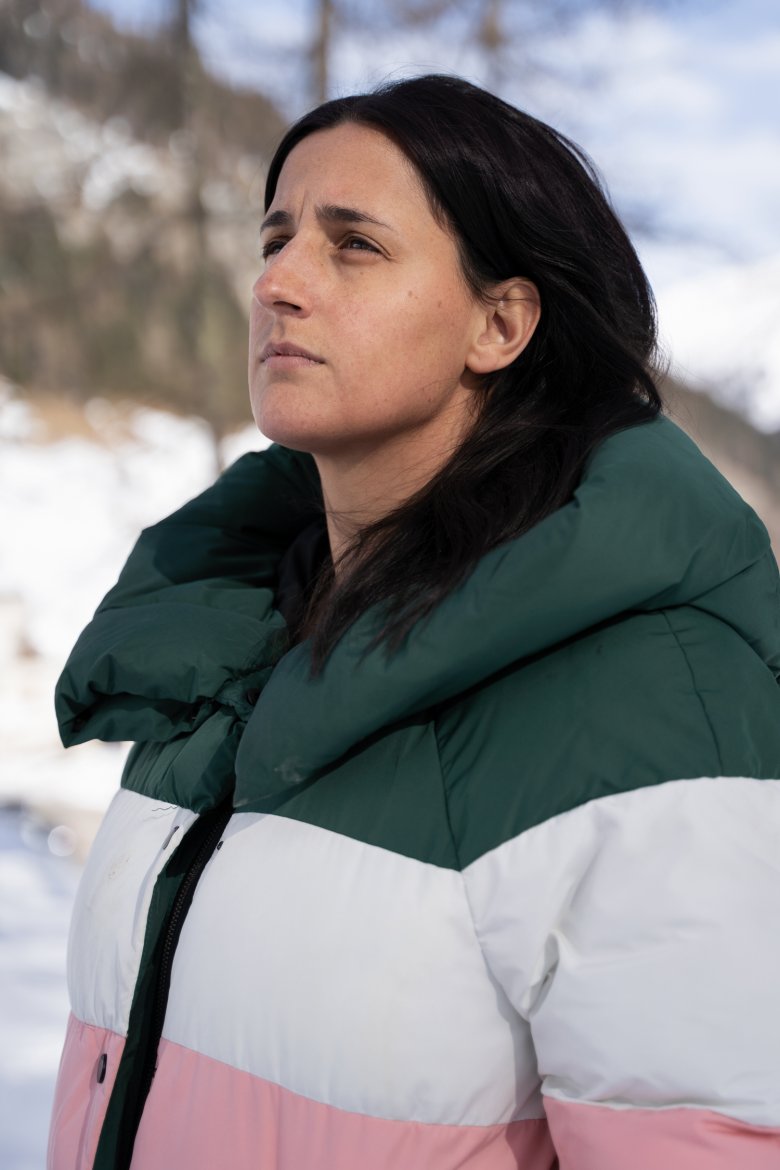
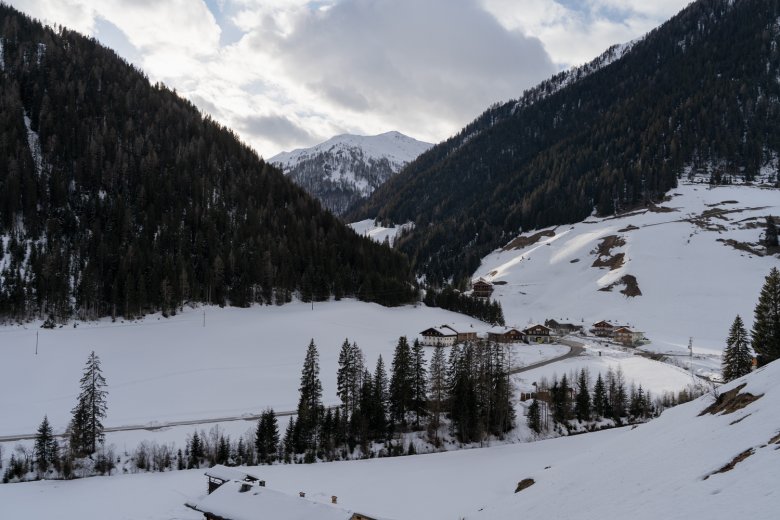
Innervillgraten | 1,402 Metres | 925 Inhabitants
Anna Huber, 36, glassblower
“My mother ran a mountain hut at 2,400 metres above sea level. My father worked as a wood carver. As a child I spent lots of time in his workshop and always wanted to learn something that not everyone can do. That’s why, aged 17, I went to the village of Kramsach to the only glass-blowing school in Austria. After completing my apprenticeship my father offered me the chance to set up my own glass-blowing workshop here. Friends, family and home have always been important to me. I have never regretted coming back. I love music – I play double bass and sing in the band Lacoustic. In the past, living in remote communities such as this one meant being quite detached from society. Today you only need to go on the internet and the whole world opens up. I met a great man and brought him here into the valley. He also plays in our band.”
Innervillgraten
Remote, traditional and idyllic are three good words to describe the village of Innervillgraten in East Tirol, which is a popular base for walkers and hikers wishing to explore the region.









